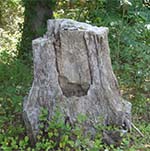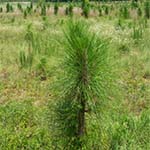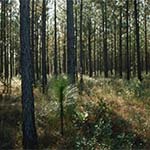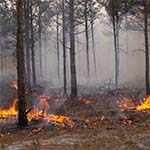Longleaf Pine
In North Carolina longleaf pine forests once covered nearly all of the upper coastal plain and lower piedmont. Although today they cover significantly less acres, longleaf pine forests are among the most diverse ecosystems in the world. Learn about the importance of the longleaf pine to the region’s history, economy and biodiversity.
 |
HISTORY
|
 |
THE TREELongleaf pine, the longest-living of the southern pine species, is genetically adapted to tolerate fire. In its early years, it stays in a grass stage for an extended period, establishing an extensive root system rather than growing taller. |
 |
THE ECOSYSTEMThe early successional understory of a longleaf pine forest, which is maintained by periodic fire, supports diverse wildlife and plant species, including many that are rare or endangered. |
 |
MANAGEMENTActive management can improve the health, productivity and diversity of the longleaf forest. Learn about understory management, prescribed fire, reforestation and other management practices that can help you achieve your objectives for your longleaf forest. |
